Hi! This is Cool Book Facts, an offshoot newsletter form my primary author one where I discuss some of the insanely interesting things I’ve come across in my research for books. 📚😎 As a reminder, you get my author news in the first part of the month, and this one in the second part.
In my novel The Enigma Challenge, publishing next year, there’s a scene that takes place at the Fountain of St. Jordi in the Barcelona Cathedral in Barcelona, Spain.
I can’t tell you what takes place there in the novel, but it is VERY BAD!
What you should know now, though, is that St. Jordi’s fountain is real, and so is the festival of the dancing egg (on which the badness occurs!) called l'ou com balla every year on the feast of Corpus Christi.
Let’s get into this tradition. ⬇️
The Barcelona Cathedral
The Barcelona Cathedral is located smack in Barcelona’s Barri Gòtic, or Gothic quarter. It supposedly sits atop an ancient Roman pagan temple, which was converted to a Christian church around 343 AD, and then subsequent churches went up; its current form began construction in 1298.
In his pocket city travel guide to Barcelona, Rick Steves is quick to point out that the cathedral “doesn’t rank among Europe’s finest (and frankly barely cracks the top 20)” (rude) but honestly? It’s pretty impressive—and it comes with some great side quests, like the Cloisters.
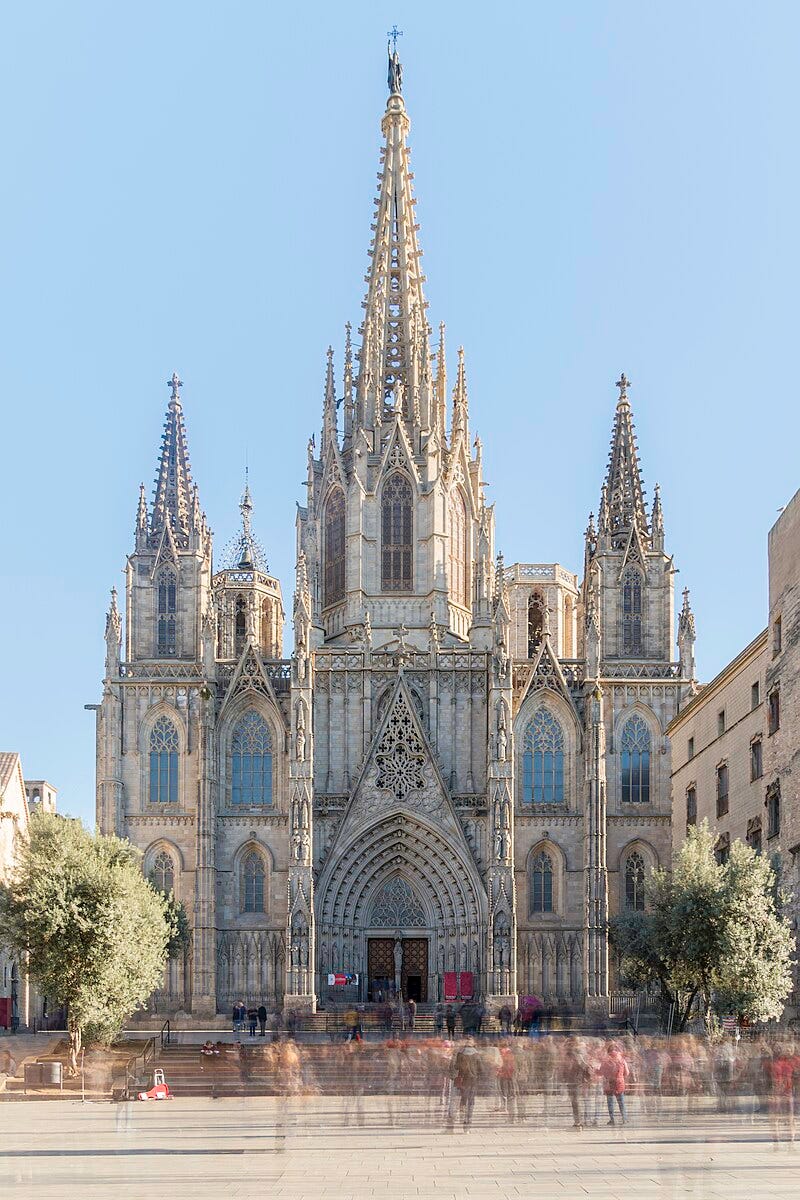
Additionally, Robert Hughes in his book Barcelona says, “The Cathedral of Barcelona presents fewer epiphanies [than the Santa Maria Del Mar church]…It is altogether a gloomier building…despite its undeniable grandeur, it seems heavier, more blackened, more cluttered.”
Perhaps if Hughes had taken the time to understand the effects of light and city pollution on porous stone, he might understand better the blackening of the cathedral’s groin vaults, but I digress.
In part, Hughes is right about the gloom, but what do you expect from a Gothic-style church that is nearly 800 years old?
The cathedral continues this gloomy presentation with a crypt beyond the high altar— desiccated corpse alert!—of Saint Eulàlia.
Eulàlia was 13 when she was “martyred by Romans” in around 304 AD, and there is a bunch of mythology around this, like that she was tortured 13 times or some such, stripped naked, yet her modesty was preserved by a sudden and convenient snowstorm, and rolled down the street inside a barrel of knives (!!) before being decapitated and saltired (spread like an X) on a cross. Sounds heinous, but at least this poor kid gets the last laugh. The early Christians were like “Hey Romans, 🖕 and we’re giving her a whole cathedral over your stuff.”
The 13 geese
The Cloisters to the side of the main cathedral is dedicated to Eulàlia, too — and always filled with 13 white geese in her memory. The geese have been stocked there for around 500 years (yes, the same geese 😂), and one source says they were an early alarm system, honking to alert monks of any intruders. I can personally confirm they still honk today.
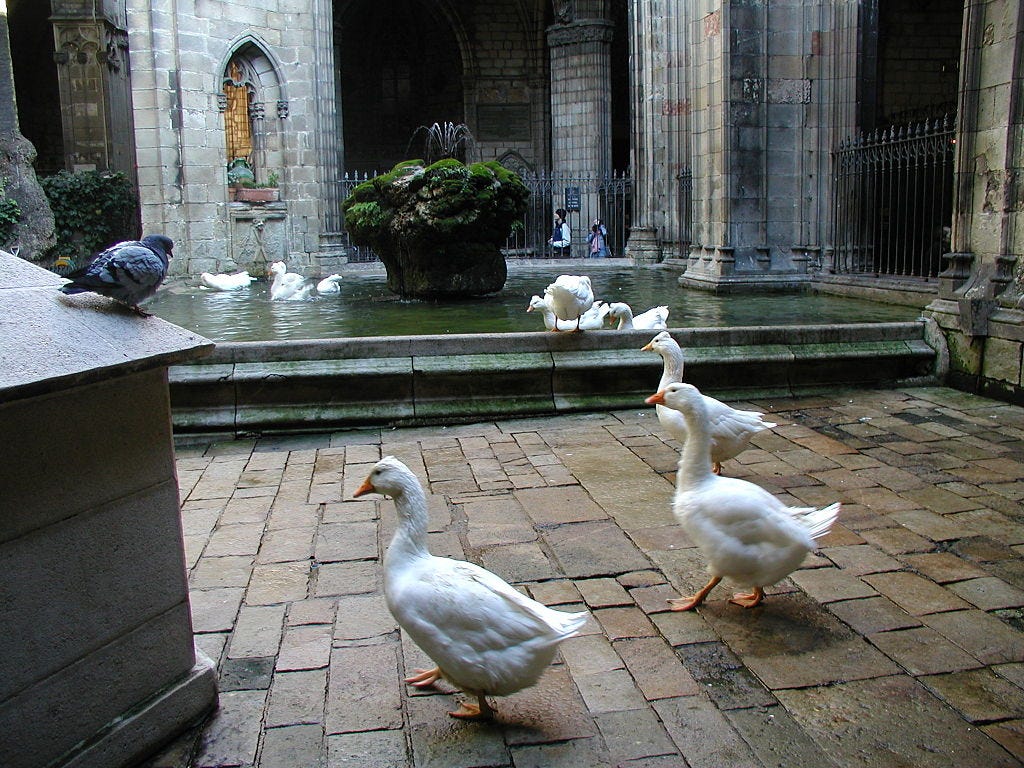
Of the Cloisters, Hughes writes that it is “the most delicious public haven in the Barri Gòtic.” That feels like a weird exaggeration; I’ve been there and it’s fine? Anyway on one of the Cloisters is St. Jordi’s fountain. I hope you’re still reading, because this is where the good stuff is.
St. Jordi’s fountain and the dancing egg
In the corner of the Cloisters is a fountain worn by water, visitor touch, and time. At the top is a metal figure of Saint Jordi (aka George) atop a horse, spear in hand, to slay the dragon below (St. Jordi is the patron saint of Barcelona).
Robert Hughes published his book Barcelona in 1992, and he describes the figure as a “battered stone figure” that is “almost unrecognizable” but I think it must have been replaced since then because it’s pretty clear and metal now.
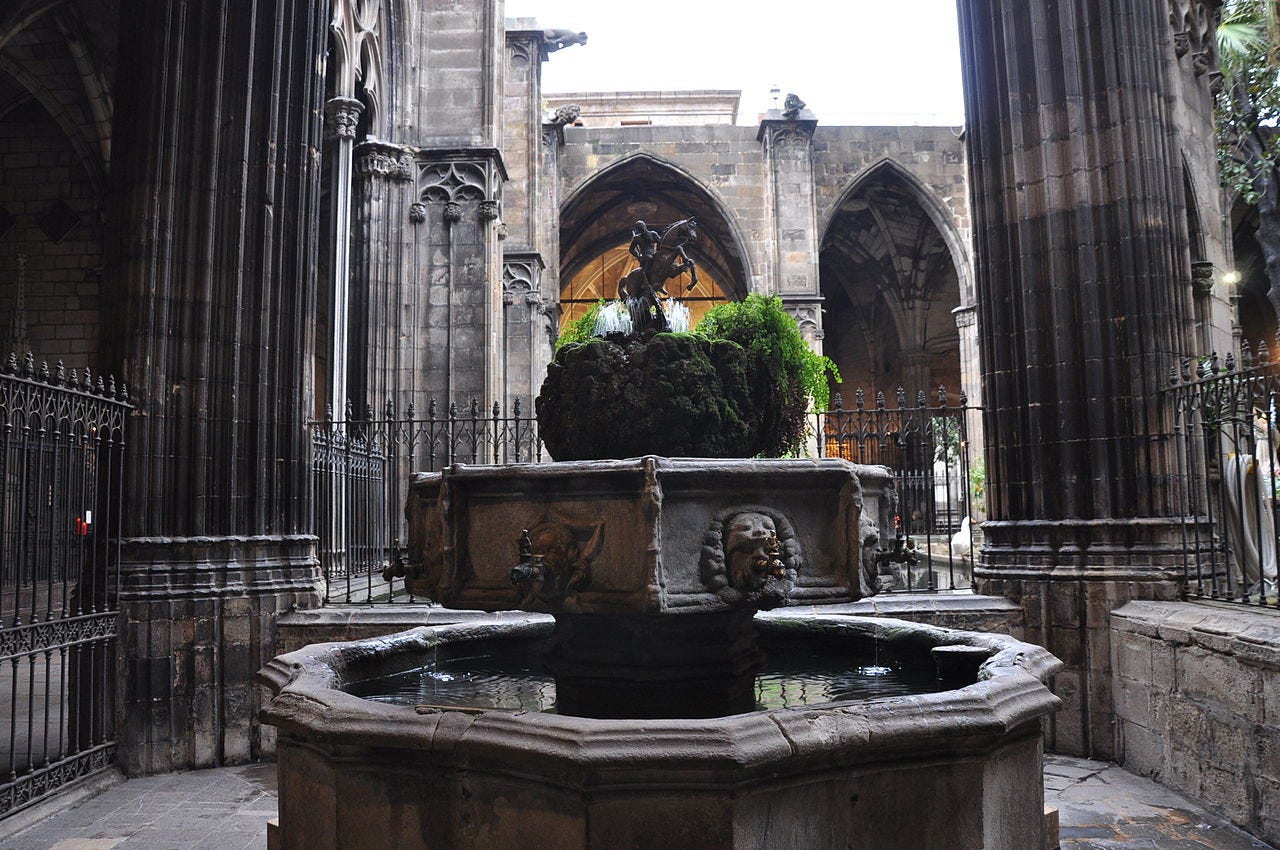
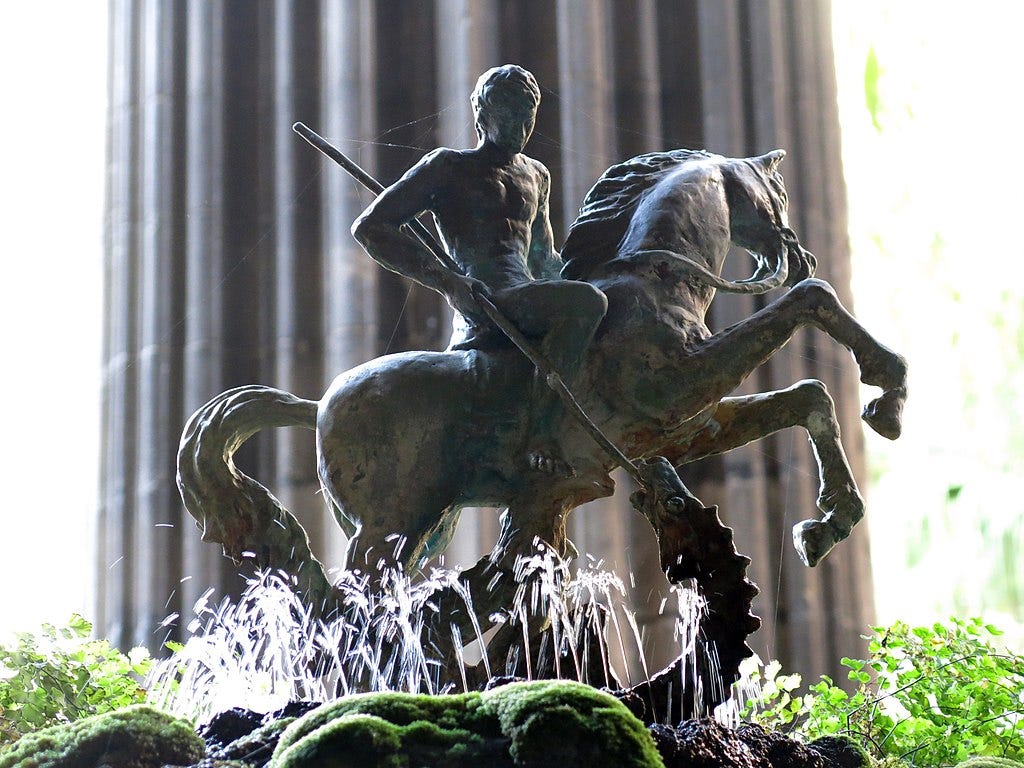
The dancing egg
Every year on the Feast of Corpus Christi, a charming tradition takes place where the fountain is festooned in lush layers of flowers, and at the top is placed an egg, which “dances” atop the spray.
Here is a detail of the egg dancing in the water:
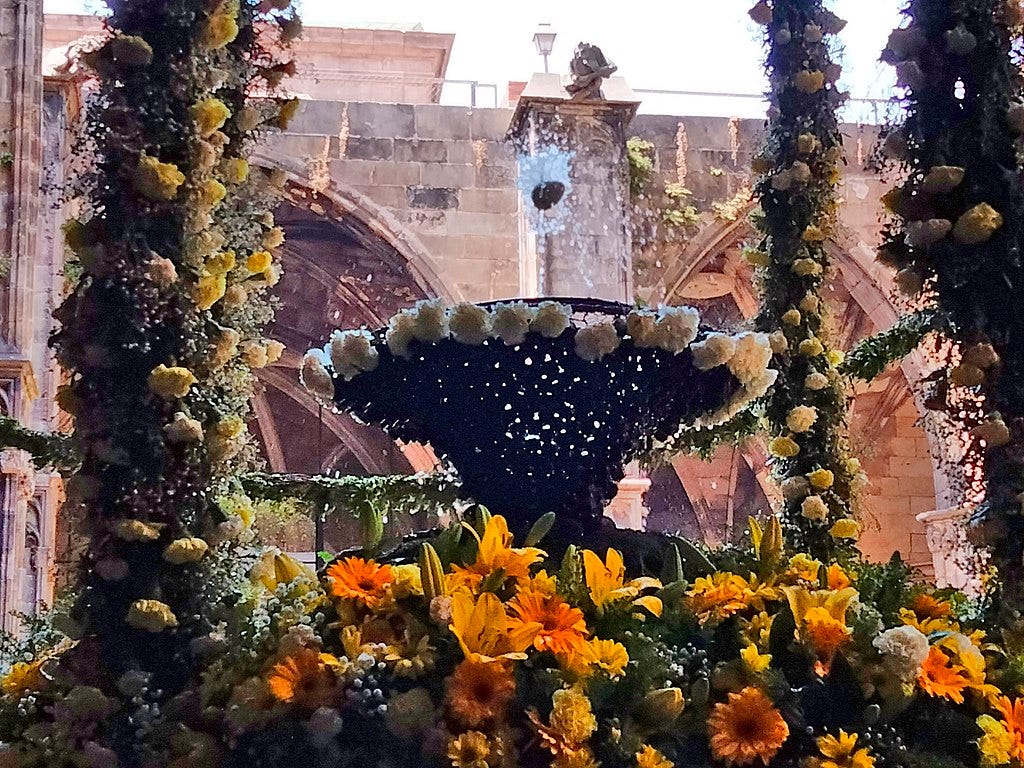
The Feast of Corpus Christi is a Catholic tradition celebrated each year on the Thursday following Pentecost. The date varies; this year it is June 19, 2025.
Hughes says, “It was once the custom to put an empty eggshell on its water jet during the feast of Corpus Christi so that it danced up and down, but the symbolism of l’ou come balla (as it has long been called) is now lost.”
Hughes doesn’t elaborate why it was lost, but the Barcelona City Council website suggests the egg is a symbol of fertility and spring. They add, “The ou com balla includes an egg, water and an abundance of flowers, all three of which are symbols of fertility and regeneration, part of the vitality of the spring season. It is popularly thought that the dancing egg represents the host, or the body of Christ in the Eucharist, inside a rich casing decorated with precious stones.”
I mean, sure.
Most sources agree that there is a first mention of eggs used in 1140, but the tradition isn’t recorded until 1637.
The Feast of Corpus Christi celebrates the Eucharist, or the transubstantiation of the host into the body of Christ, which Catholics then eat as part of every Mass — essentially turning them into cannibals! 🧟 (Don’t worry, they wash it down with wine that’s been turned into blood, which then makes them vampire cannibals. 🧛♀️)
Whatever its origins, this delightful surfing egg is seen all over Barcelona in various fountains, but the Barcelona Cathedral is the one where I chose to set a scene in my book.
Where the bad stuff happens 😈.
Believe me, I wish you didn’t have to wait another year either to read it either, but this is the way of publishing. Until then, I will titillate you with facts.
Thanks for reading! Did you miss the first Cool Books Fact post? Read now about the Ishtar Gate!
References
Barcelona by Robert Hughes, Knopf, 1992, pages 150-153
https://catedralbcn.org/en/the-cathedral/traditions/
https://ucatholic.com/blog/the-unexpected-reason-why-13-white-geese-live-in-the-barcelona-cathedral/
https://www.barcelona.cat/culturapopular/en/festivals-and-traditions/festival-characters-and-elements/ou-com-balla




I can hardly wait for the book to arrive ! XOXO